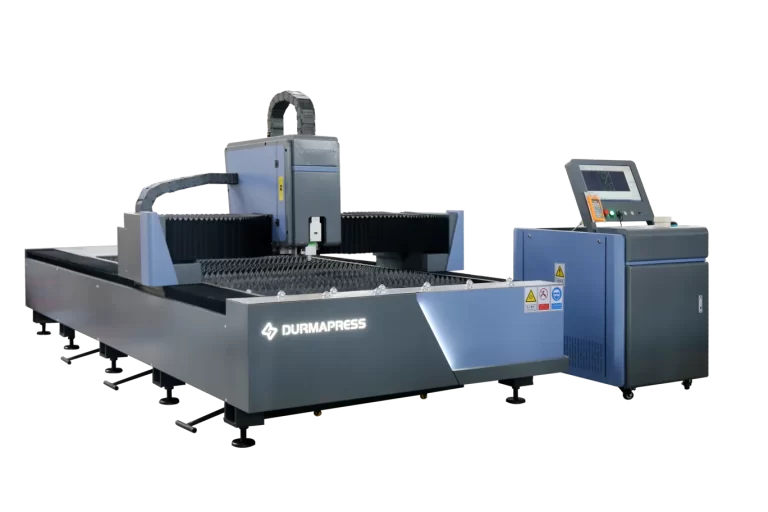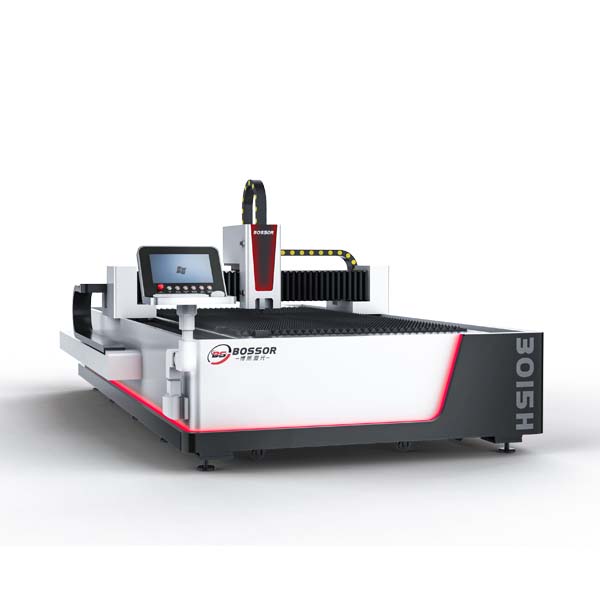
Sobre nós
Durmapress specializes in designing, manufacturing, and selling various metal processing equipment, including bending machines, shears, punches, and laser cutting machines. The company was founded in 2014, with years of experience and technology accumulation. DurmaPress has become one of the well-known brands in China's metal processing machinery industry.
Contactar-nos
Publicações recentes
Categorias
Siga-nos
Novo vídeo semanal
Laser technology has become a core driver of modern manufacturing—from precision micro-processing to high-power metal cutting. Among all laser types, pulse laser and fiber laser are the two most widely used in industrial production.
However, many buyers, engineers, and factory operators still struggle to understand their differences, which often leads to incorrect machine selection, lower productivity, or higher processing costs.
This article provides a clear, in-depth, and practical comparison of pulse laser vs fiber laser, helping you choose the right technology for your application.

What Is a Fiber Laser? (Definition & Working Principle)
How Fiber Lasers Work
A laser de fibra uses a long, flexible optical fiber doped with rare-earth elements (typically ytterbium) to amplify light. The laser source outputs continuous light, commonly known as Continuous Wave (CW).
Key characteristics:
- Stable, uninterrupted energy output
- Small spot size with excellent beam quality
- High wall-plug efficiency
- Power range typically from 1 kW–30 kW or higher
Because of its stability and high power, fiber lasers are ideal for sheets, tubes, and precision metal fabrication.
Key Features of Fiber Lasers
- Continuous output (CW) suitable for deep penetration
- High power density, enabling fast cutting
- Low maintenance & long lifespan (100,000+ hours)
- Strong compatibility with CNC systems

Common Applications
Fiber lasers are used extensively in:
- Metal cutting (carbon steel, stainless steel, aluminum, copper)
- Welding & brazing
- Deep engraving
- Tube cutting systems
- Automotive & aerospace parts fabrication
For joining metal parts with minimal distortion, learn more about our fiber laser welding systems.
What Is a Pulse Laser? (Definition & Working Principle)
How Pulsed Lasers Work
Unlike fiber lasers that emit continuous light, pulsed lasers release energy within extremely short bursts—microseconds, nanoseconds, picoseconds, or femtoseconds.
This creates:
- Extremely high peak power
- Low thermal impact on materials
- Precise ablation without melting
Because of these characteristics, pulsed lasers excel at removing surface layers without damaging the base material.
Types of Pulsed Lasers
- Q-Switched Pulsed Laser
Stable nanosecond pulses, commonly used in cleaning and marking. - MOPA Pulsed Laser
Adjustable pulse width, ideal for plastics, anodized aluminum marking, fine engraving. - Picosecond / Femtosecond Laser
Ultra-precise micro-processing with almost zero heat.
Common Applications
Environmental concerns are driving significant changes in manufacturing processes. Companies are increasingly adopting sustainable practices not only to meet regulatory requirements but also to improve brand reputation and reduce operational costs.
From energy-efficient production lines to waste reduction initiatives, the industry is rethinking traditional approaches. The circular economy model, which emphasizes resource efficiency and waste minimization, is gaining traction across manufacturing sectors.
Pulse Laser vs Fiber Laser: What Are the Key Differences?
The table below helps visualize the comparison:
| Category | Fiber Laser (CW) | Pulse Laser |
|---|---|---|
| Output Mode | Continuous, stable | Short bursts (µs–ns) |
| Power | High average power | High peak power, lower average power |
| Heat Impact | Higher | Very low HAZ |
| Best For | Cutting, welding | Cleaning, surface treatment |
| Materials | Metals | Metals, plastics, coatings |
| Cost | Higher | Medium–high depending on type |
1. Output Mode – Continuous vs Pulsed
Fiber laser = steady and stable cutting
Pulse laser = sudden high-energy bursts for precise material removal
2. Material Suitability
Fiber laser is ideal for:
- Thick metal sheets
- Welding tasks
- High-volume production
Pulse laser works best for:
- Delicate surface work
- Removal of coatings without damage
- High-precision micro-features
3. Heat Affected Zone (HAZ)
- Fiber laser introduces more thermal energy
- Pulse laser minimizes heat spread, preventing discoloration or micro-cracks
4. Cost & Maintenance
- Fiber laser source cost is higher but lifespan is longer
- Pulsed laser (MOPA/Q-switched) has specialized components that may increase service needs
- Pulse laser cleaning consumes little consumables → lower long-term operating cost
How to Choose Between Pulse Laser and Fiber Laser (Buyer’s Guide)

Choose a Fiber Laser If You Need…
- Fast cutting of steel, aluminum, copper
- High power & deep penetration
- Industrial-scale metal production
- High-speed welding
Choose a Pulse Laser If You Need…
- Rust removal / paint stripping
- Oil, oxide, or coating removal
- Precision micro-machining
- Zero-damage cleaning for molds, dies, and restoration
Quick Decision Checklist
- Material type (metal / plastic / coated)
- Required finish (cutting vs cleaning)
- Budget & operating cost
- Production environment
- Required tolerances / accuracy
Common Misunderstandings About Pulse and Fiber Lasers
Misunderstanding 1: A pulse laser is only for cleaning
Reality: It is also used for micro-engraving, electronics, semiconductor processing, and precision marking.
Misunderstanding 2: Fiber lasers cannot do delicate work
High-frequency CW lasers and low-power fiber lasers can perform fine marking and engraving.
Misunderstanding 3: Higher wattage means better performance
Not always.
Pulse width, frequency, and beam quality matter more in surface work.
Conclusion – Which Laser Is Right for You?
There is no universal “best” laser—only the one that fits your material, budget, and application.
- If your goal is cutting, welding, deep engraving, choose a fiber laser.
- If your goal is cleaning, surface preparation, micro-machining, choose a pulse laser.
Understanding these differences allows manufacturers to improve production efficiency while minimizing waste, defects, and operating costs.To get personalized recommendations or request a demo, feel free to contact us through our industrial laser solutions page.
FAQ on Pulse Laser and Fiber Laser
No—each laser serves different applications. Pulsed lasers excel at surface cleaning; fiber lasers excel at cutting and welding.
It can remove rust or paint, but the heat may damage the base material. A pulsed laser is safer and more effective.
Typically 80,000–100,000 hours.
MOPA has adjustable pulse width for higher precision; Q-switched is stable and cost-friendly for standard cleaning.
Yes. Shorter pulses yield smoother cleaning results and less heat impact.




